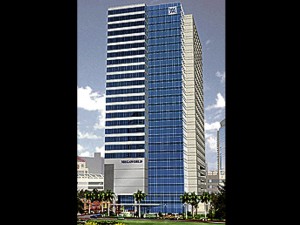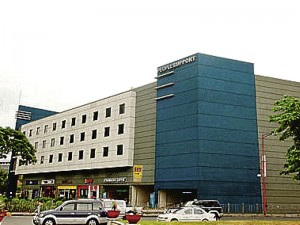Property developers cash in on BPO boom

UP-AYALA Land TechnoHub adds to the growing number of BPO offices built outside the traditional Makati and Ortigas business areas
THE BOOM in the business process outsourcing (BPO) industry seen in recent years has brought in not only thousands of new jobs but also million dollars worth of investments to spur the local economy.
It also provided a much-needed haven of opportunities for the Philippine real estate sector, which earlier struggled to climb out of a devastating slump seen during the Asian crisis in the late ’90s.
The thriving BPO industry can indeed be credited largely for having driven the real estate business with its increasing demand for office space, prompting developers to construct more office buildings to accommodate an industry that has been growing by an annual average of about 160 percent over the past five years.
Lifeblood
“Recently, (the BPO industry) has been the lifeblood of the office sector in the real estate… By 2003 or 2004, the BPO industry, call centers in particular, started to pick up and developers responded with BPO-ready buildings,” said Phillip Añonuevo, associate director for markets at Jones Lang LaSalle Leechiu.
In an exclusive interview with Inquirer Property, Añonuevo and Lylah Fronda, senior manager for markets, also at Jones Lang LaSalle, further waxed optimistic that the real estate sector will continue to ride the BPO growth wave, at least over the next several years.
“The BPO sector will continue to occupy 80 to 90 percent of the estimated 300,000 square meters of office space taken up annually. We expect that this annual growth will continue until 2012 and possibly for a longer time,” Añonuevo said.
According to Añonuevo, the forecasts of the Business Processing Association of the Philippines point to an uptrend, given the group’s targets of increasing direct employment to 900,000 to 1.3 million by 2016, from around 530,000 as of end-2010.
“Developers are responding to the BPOs—anticipating the future needs of BPOs by building more office spaces. Different districts attract different types of tenants,” he noted.
And since BPOs no longer limit themselves to the traditional central business district areas like Makati and Ortigas, real estate developers now have the opportunity of developing other areas. More recently, BPO firms have sprung up at the UP-Ayala TechnoHub and Eastwood in Quezon City as well as Fort Bonifacio in Taguig.
“There was a lack of supply (of office space) in 2005 and 2006… A lot of developers realized that opportunity and created emerging business districts after realizing that rather than paying much (for rent), they could save a lot on the cost and go somewhere else,” Añonuevo explained.
Closer to homes
“Previously, developers were just building in Makati and Ortigas because those are the traditional districts. But because BPOs want to be closer to the residential areas, (offices are being) built all over Metro Manila. For example, you have small business districts in Quezon City where Ayala Land and Eton Properties have business parks. That’s an example of bringing the call center jobs closer to the homes,” he further said.
Call centers, Añonuevo added, have also begun moving outside Metro Manila as early as 2004, including ClientLogic Corp., which put up office in Baguio and People Support, which went to Cebu, thus starting a trend in the local BPO industry.
Officials also cited BPO firms with the likes of Convergys, TeleTech and Stream Global Services, which, after putting up their first three or so offices in Metro Manila, have decided to scout for potential BPO sites in the provinces. As such, the country’s biggest developers including SM Development Corp., Megaworld Corp. and Ayala Corp., have since started offering buildings and office spaces outside Metro Manila.
Moving out
Fronda explained that BPOs have begun moving out to small cities because of the labor availability, particularly due to the leverage of getting fresh graduates and the lower costs of doing business in the provinces. Real estate wise, the rental prices could be lower by as much as 30 to 40 percent compared to the prices in Makati and Ortigas, she added.
Añonuevo agreed, noting that the three main considerations of BPO firms in locating to a certain area would be availability of labor, real estate or office space and telco and IT infrastructure.
In 2010, the BPAP came out with the so-called Top 10 Next Wave Cities, which identified new and potential investment sites for the BPO and IT sectors. Results of the group’s study have listed Davao, Sta. Rosa, Laguna; Bacolod-Iloilo; Metro Cavite; Lipa, Batangas; Cagayan de Oro; Malolos, Bulacan; Baguio and Dumaguete, as such sites.
These Next Wave Cities alone were expected to contribute $1.2 billion in additional revenue over the next two years.


